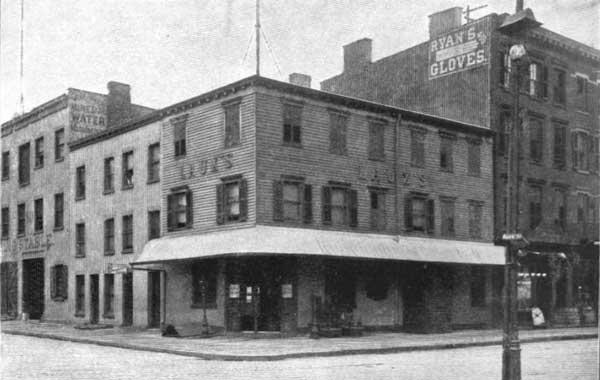
BY ERIC FERRARA |
On the afternoon of Feb. 24, 1813, at the height of the War of 1812, the U.S.S. Hornet, an 18-gun warship, set its sights on a British sloop anchored on the Demerara River in Guyana, South America.
While navigating a sandbar at the river’s mouth to position itself for an attack, the Hornet found itself sandwiched between two enemy ships as the man-o’-war H.M.S. Peacock approached from the Caribbean Sea. Hornet commander James Lawrence opted to engage the equal-sized Peacock — disabling it in less than 15 minutes after a short but fierce artillery exchange. The Peacock quickly sank, though many survivors were rescued by the Hornet’s American crew.
It wasn’t until April that the Hornet returned to U.S. soil with her prisoners of war, who were brought to New York City and confined in an old, three-story, wooden structure at the southeast corner of Bleecker and Bank Sts. referred to as the “Barracks.”
According to a 1918 Daughters of the American Revolution magazine article, inmates were content with their treatment during the ordeal and “expressed their appreciation” by authoring a card that stated, “We ceased to consider ourselves prisoners. Everything was done for us.” (However, the same article opened with, “This is the place where we heaped coals of fire on the heads of the British!” So let’s assume the truth is somewhere in between.)
The P.O.W.’s were released at the end of the war in 1815, though heroic Captain Lawrence did not fare as well. He was killed during his next battle on June 1, 1813 — but not before muttering words that would become synonymous with maritime war, “Don’t give up the ship!”
The original three-story structure that hosted the Barracks at 417 Bleecker St. (82 Bank St.) was converted into a hotel by Charles A. Laux sometime around the turn of the 19th century. The Laux estate then sold it to another party in 1914, who applied for permits to alter the building in 1918. By the 1930s a fourth floor was added and extensive modifications were made.
Other tenants of this address have included a liquor store in the 1870s, an antique shop in the 1970s and the Saint Lucia Hotel, which was the center of New York City’s Basque community for three decades between the 1920s and 1950s. Most recently, in 2010, Toons Thai restaurant closed its doors after more than two decades at this location.
On a related note, that century-old Daughters of the American Revolution magazine article mentioned earlier ended with the following prophetic paragraph:
“Few pass this building who have any idea of the historic association. Perhaps the time is not far distant when it will disappear and be forgotten. But it should mean much to those who love their history. And it might be well to pay it a visit, before it vanishes forever from the map of New York City!”
http://www.thevillager.com/?p=2259
